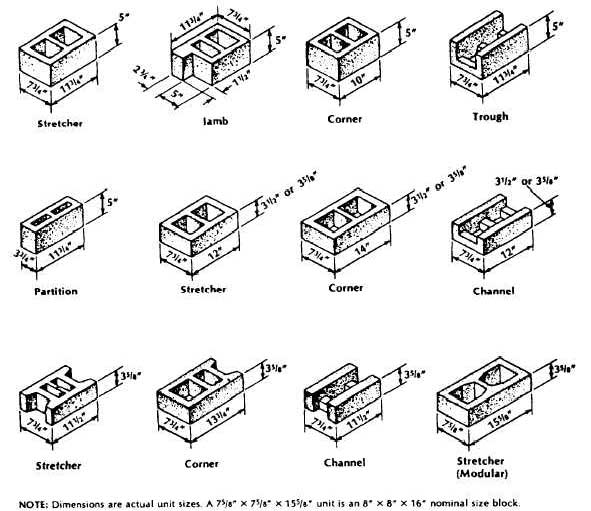Home > Construction Training Manuals > Builder 3&2 Volume 01 > Figure 8-4.-Typical Unit Sizes And Shapes Of Concrete Masonry Unitscontinued.
Fire walls and curtain walls;
Partitions and panel walks;
Backing for brick, stone, and other facings;
Fireproofing over structural members;
Fire safe walls around stairwells, elevators, and enclosures;
Piers and columns;
Retaining walls;
Chimneys; and
Concrete floor units.
There are five main types of concrete masonry units:
1. Hollow load-bearing concrete block;
2. Solid load-bearing concrete block;
3. Hollow nonload-bearing concrete block;
4. Concrete building tile; and
5. Concrete brick.
Load-bearing blocks are available in two grades: N and S. Grade N is for general use, such as exterior walls both above and below grade that may or may not be exposed to moisture penetration or weather. Both grades are also used for backup and interior walls. Grade S is for above-grade exterior walls with a weather-protective coating and for interior walls. The grades are further subdivided into two types. Type I consists of moisture-controlled units for use in arid climates. Type II consists of nonmoisture- controlled units.

Figure 8-4.-Typical unit sizes and shapes of concrete masonry units - Continued.
Continue Reading
